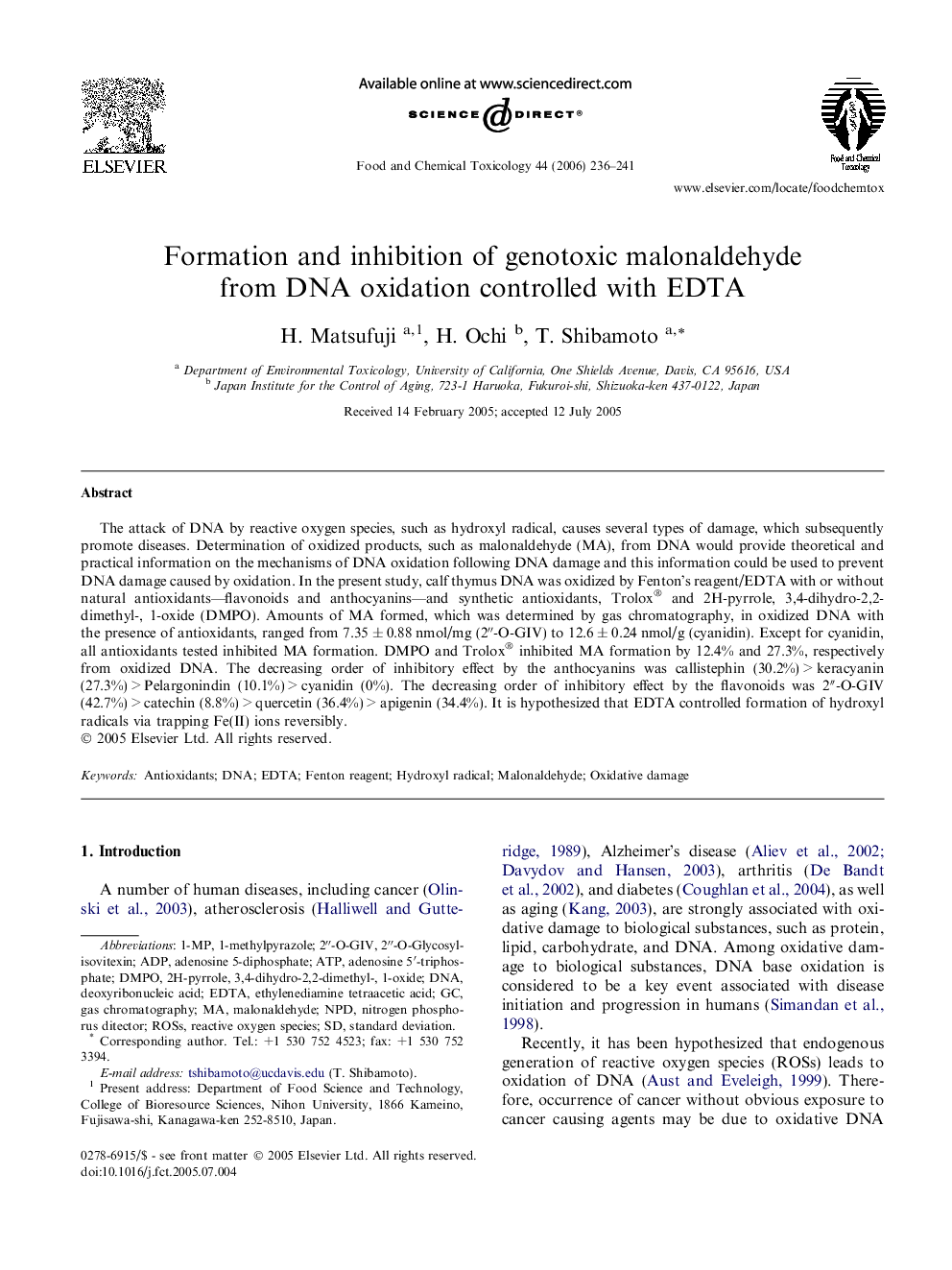| Article ID | Journal | Published Year | Pages | File Type |
|---|---|---|---|---|
| 2588045 | Food and Chemical Toxicology | 2006 | 6 Pages |
The attack of DNA by reactive oxygen species, such as hydroxyl radical, causes several types of damage, which subsequently promote diseases. Determination of oxidized products, such as malonaldehyde (MA), from DNA would provide theoretical and practical information on the mechanisms of DNA oxidation following DNA damage and this information could be used to prevent DNA damage caused by oxidation. In the present study, calf thymus DNA was oxidized by Fenton’s reagent/EDTA with or without natural antioxidants—flavonoids and anthocyanins—and synthetic antioxidants, Trolox® and 2H-pyrrole, 3,4-dihydro-2,2-dimethyl-, 1-oxide (DMPO). Amounts of MA formed, which was determined by gas chromatography, in oxidized DNA with the presence of antioxidants, ranged from 7.35 ± 0.88 nmol/mg (2″-O-GIV) to 12.6 ± 0.24 nmol/g (cyanidin). Except for cyanidin, all antioxidants tested inhibited MA formation. DMPO and Trolox® inhibited MA formation by 12.4% and 27.3%, respectively from oxidized DNA. The decreasing order of inhibitory effect by the anthocyanins was callistephin (30.2%) > keracyanin (27.3%) > Pelargonindin (10.1%) > cyanidin (0%). The decreasing order of inhibitory effect by the flavonoids was 2″-O-GIV (42.7%) > catechin (8.8%) > quercetin (36.4%) > apigenin (34.4%). It is hypothesized that EDTA controlled formation of hydroxyl radicals via trapping Fe(II) ions reversibly.
